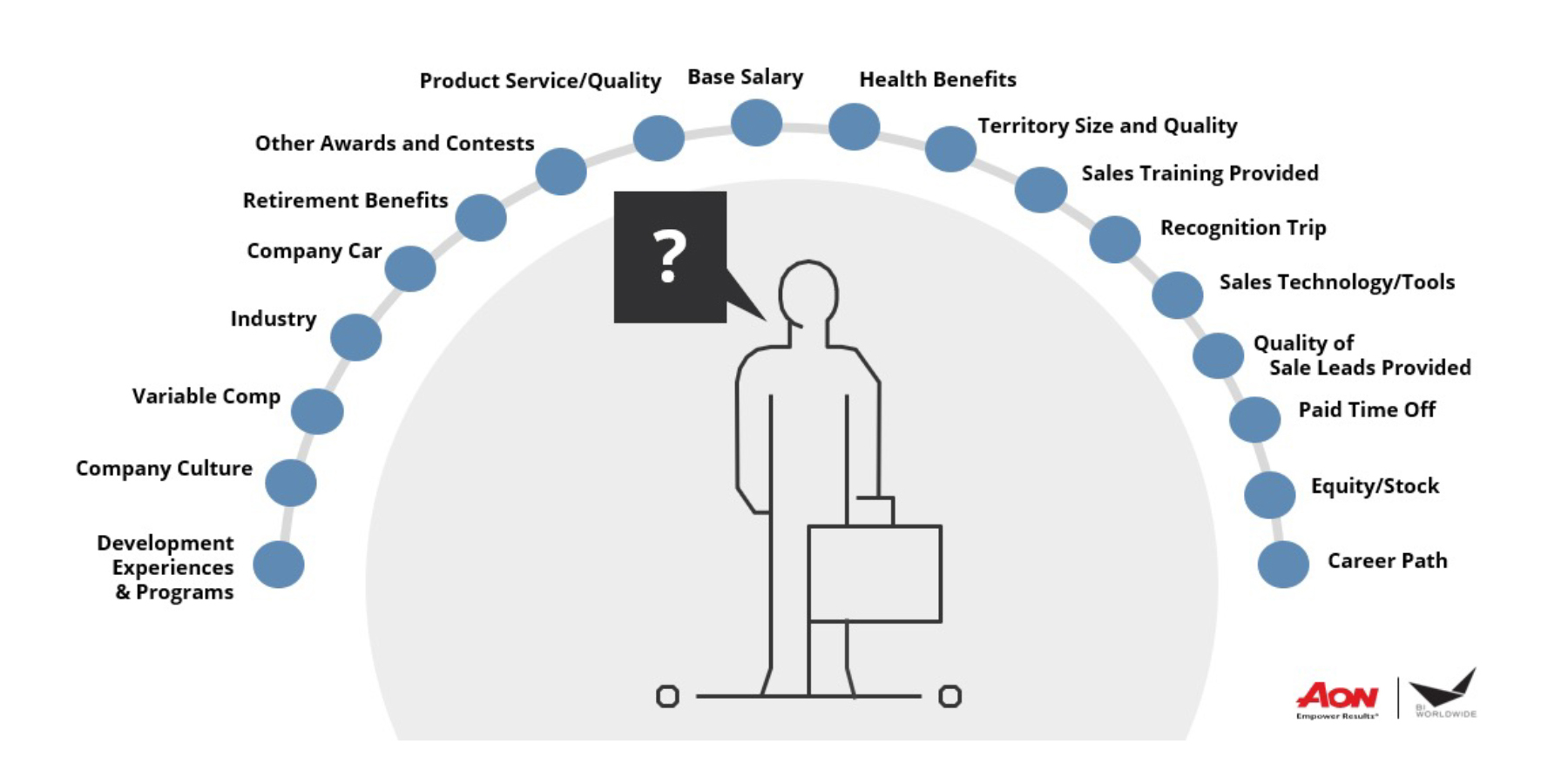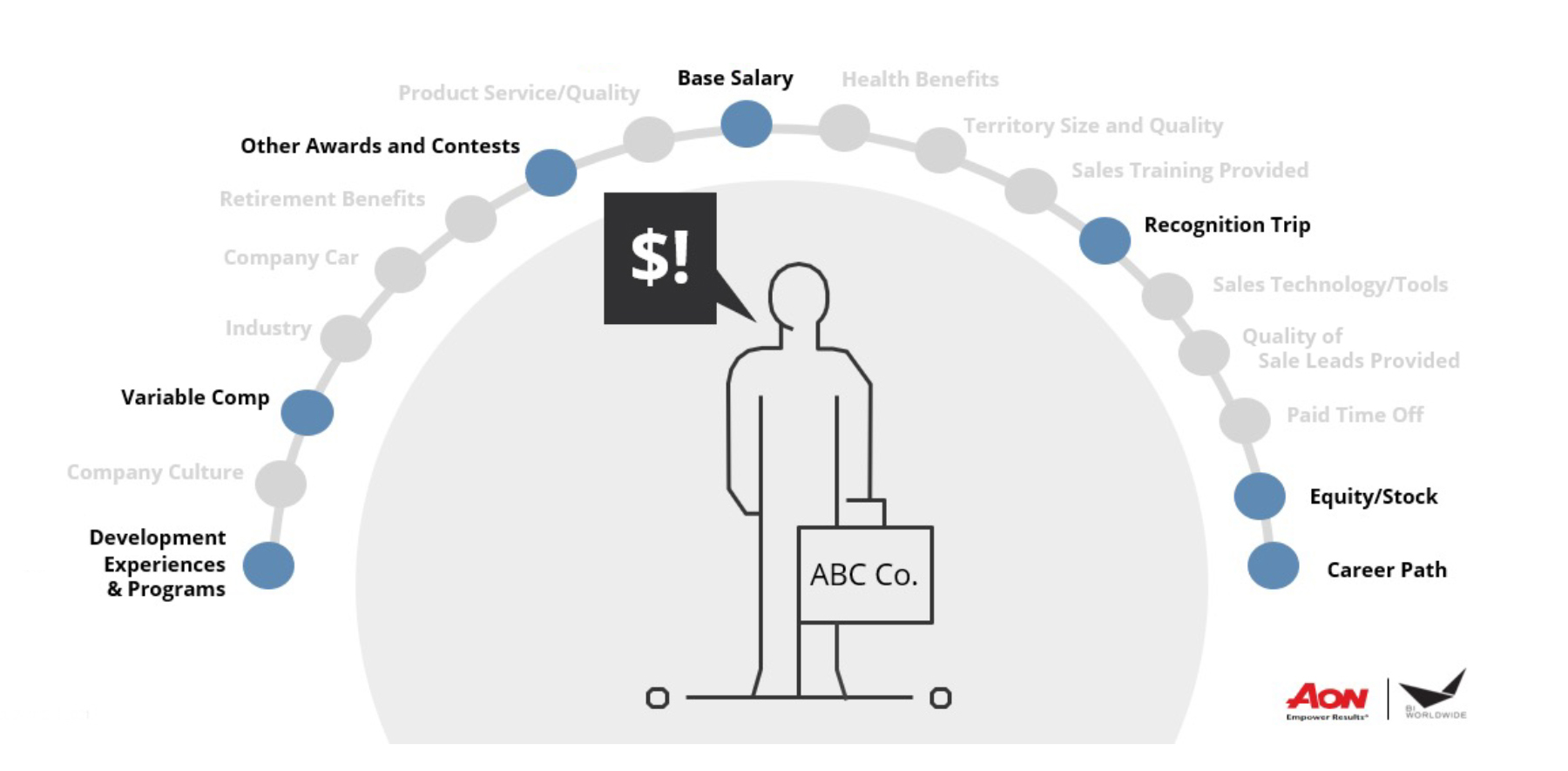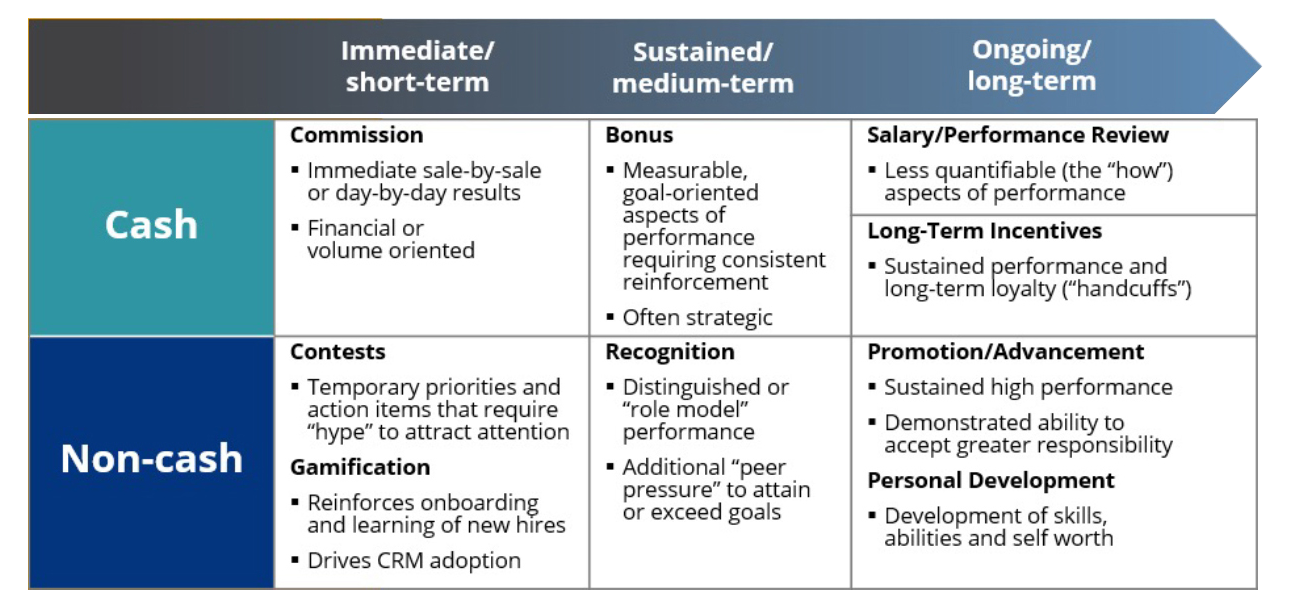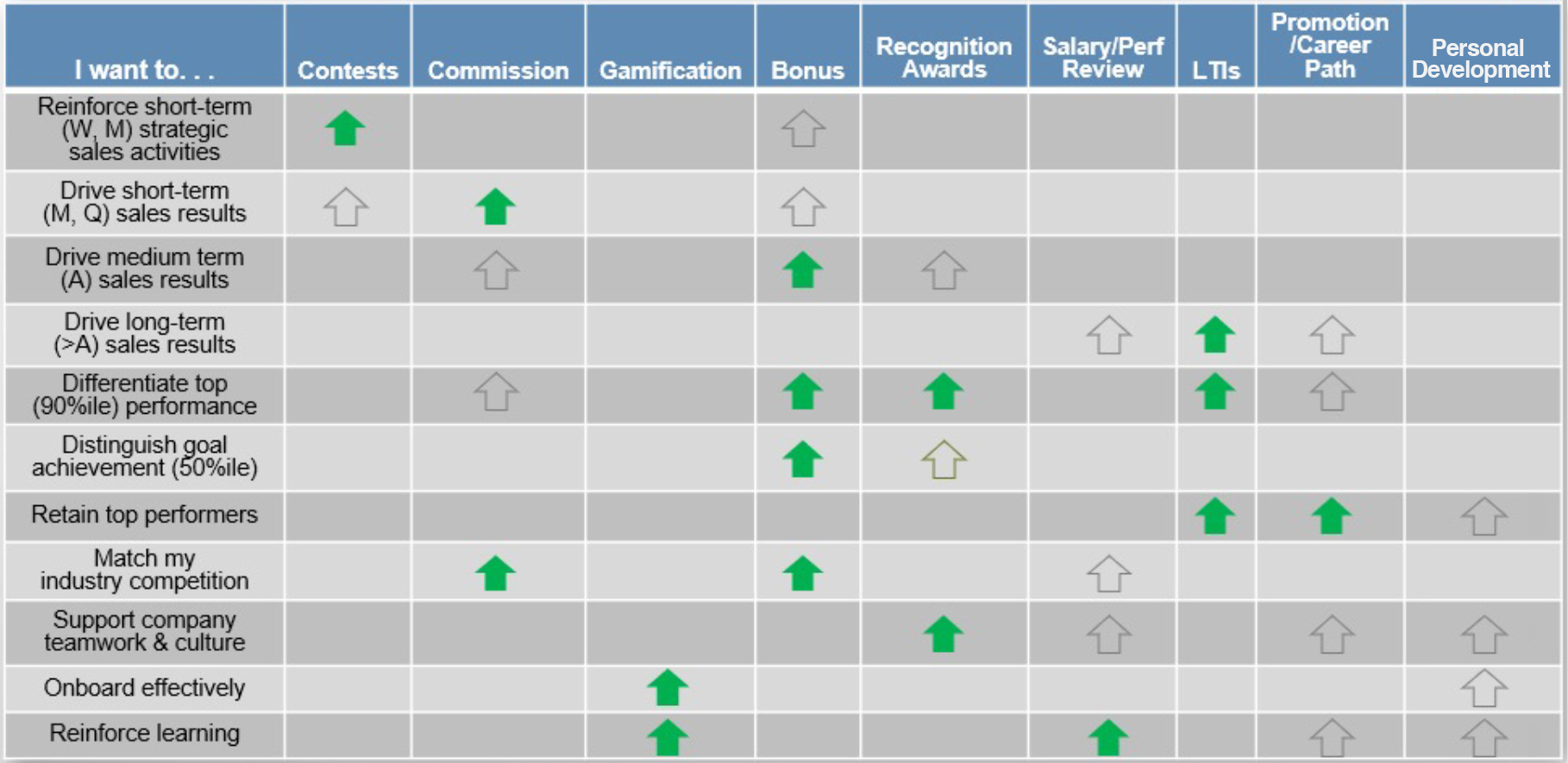How to create a competitive advantage with incentive compensation
Written by: Rob Bentley, Associate Partner Sales Effectiveness, Aon; Mark Hirschfeld, VP Consulting Services and Strategic Partnerships, BI WORLDWIDE
(View Author Bio)
Incentive compensation can help you build your brand, differentiate in a competitive talent market and, in doing so, increase your chances of success in the market.
Scroll Down
____________________
The world has certainly changed over the last 18 months so the way we develop and compensate our salespeople must change as well. Let’s start by taking a look at what’s trending differently:
- There are more diverse and inclusive sales organizations, where sales teams better reflect the customers to which they are selling.
- Companies are fighting “information overload,” trying to figure out how to maintain the attention of their sales organization on the things that really matter.
- There’s an ever-increasing pressure to attract, retain and develop top sales talent.
- Many top performers are burned out and, in the spirit of “The Great Resignation” or “The Great Reassessment,” find themselves more willing than ever to entertain pitches from outside recruiters.
____________________
Sales leaders are challenged with creating a competitive advantage that will not only help them attract and develop top salespeople, but, perhaps most importantly, retain the ones who contribute to their success as an organization. Where we believe that competitive advantage lies is in the different or underutilized methods of compensation at our disposal.
To understand how these methods of compensation work together, we need to start by understanding the sales employee value proposition. Why do salespeople work for a given company? Why do they join and why do they stay? What motivates them to meet or exceed company expectations?
In our research and client work, we’ve identified 18 drivers of the sales employee value proposition, ranging from work culture and development opportunities to recognition and equity/stock options.

Of these 18 aspects, incentive compensation drivers have the greatest impact on sales employee behavior because they are performance-based. These include base salary, variable comp, awards and contests, recognition, equity/stock options (or LTIs, long-term incentives), career pathing and development experiences or programs.

There are two primary dimensions in which we look at these drivers: cash vs. non-cash and the timeframe in which they are most effective at producing results. In this framework, short-term accounts for monthly up to quarterly, medium-term accounts for quarterly up to annually and long-term accounts for ongoing programs.

Commissions, bonuses, contests and recognition are the tools most commonly used by sales organizations. But if you’re looking to create a competitive advantage that will help you attract and retain top salespeople, particularly for more than 3-4 years, you need to tap into some of the other performance drivers at your disposal: gamification, salary/performance reviews, promotions and advancement opportunities, LTIs and personal development.
As we’ve introduced this framework into client work and shared it on a recent webinar, questions have emerged from top sales leaders looking to use this model to help them address key business challenges. The chart below can be a guide to help you think about your specific business challenges and which levers may apply:

These performance drivers should be viewed as levers or tools. If you have a retention challenge, for example, you may focus your efforts on different levers than if you have a need to drive short-term sales. The key is knowing when and where to use each one in a way that aligns with your organizational goals. The levers identified with green arrows should be your primary focus, while those in gray are your secondary areas for consideration.
____________________
Using this approach can help you build your brand, differentiate in a competitive talent market and, in doing so, increase your chances of success in the market.
____________________
The best way to get started is to get in touch.



















